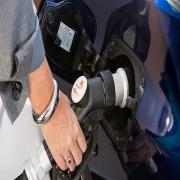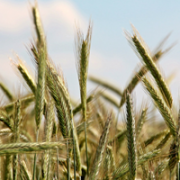Photosynthetic electron partitioning between [FeFe]-hydrogenase and ferredoxin
Photosynthetic water splitting, coupled to hydrogenase-catalyzed hydrogen production, is considered a promising clean, renewable source of energy. It is widely accepted that the oxygen sensitivity of hydrogen production, combined with competition between hydrogenases and NADPH-dependent carbon dioxide fixation are the main limitations for its commercialization. Here we provide evidence that, under the anaerobic conditions that support hydrogen production, there is a significant loss of photosynthetic electrons toward NADPH production in vitro. To elucidate the basis for competition, we bioengineered a ferredoxin-hydrogenase fusion and characterized hydrogen production kinetics in the presence of Fd, ferredoxin:NADP+-oxidoreductase (FNR), and NADP+. Replacing the hydrogenase with a ferredoxin-hydrogenase fusion switched the bias of electron transfer from FNR to hydrogenase and resulted in an increased rate of hydrogen photoproduction. These results suggest a new direction for improvement of biohydrogen production and a means to further resolve the mechanisms that control partitioning of photosynthetic electron transport.


![Photosynthetic electron partitioning between [FeFe]-hydrogenase and ferredoxin Photosynthetic electron partitioning between [FeFe]-hydrogenase and ferredoxin](https://energy.tau.ac.il/sites/energy_en.tau.ac.il/files/styles/reaserch_main_image_580_x_330/public/12_medium.png?itok=N774_CWl)



